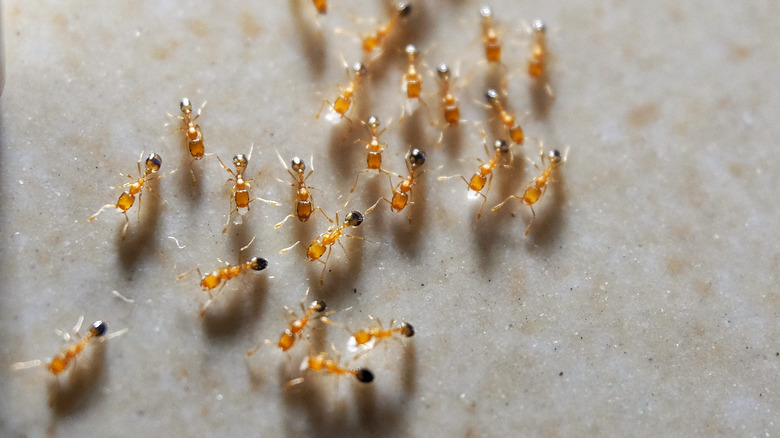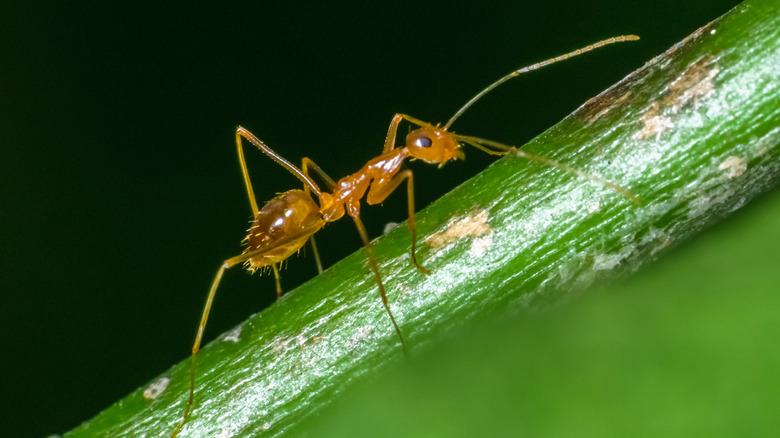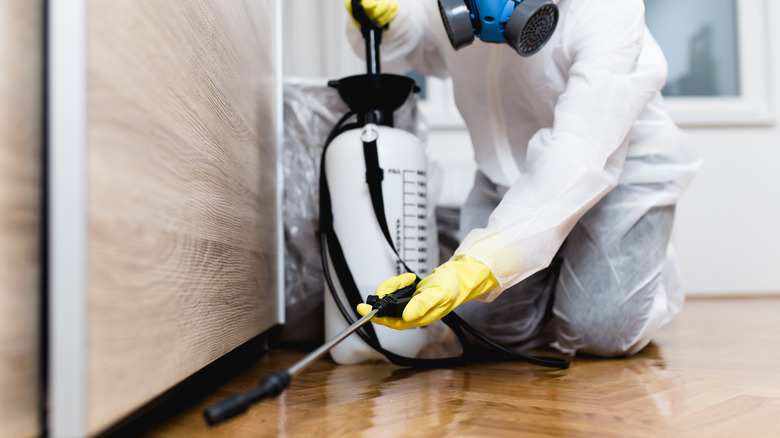How To Identify Pharaoh Ants (And Get Rid Of Them For Good)
Mistakenly assumed to have been discovered in pharaoh tombs and named thereafter, pharaoh ants (Monomorium pharaonis) are some of the most difficult household pests to control. They rapidly nest in dark, moist cracks and crevices to breed so they can gorge themselves on sugar-high foods in your home. As multiple queens rule these tiny budding ants, they quickly split their groupings and spread out to nearby areas, forming super colonies, which is a headache. After discovering their infestation, you must purge them with ant baits or insecticides and foil their return by sealing their potential entry points.
While pharaoh ants don't bite usually, they may do so if threatened. Granted, their stings aren't harmful, but they are carriers of harmful pathogens, including staphylococcus and salmonella. So, to minimize the risk of contracting severe diseases, eliminate their swarm before it multiplies any further. But before you decide on one of the ways to get rid of ants, know how to identify pharaohs correctly.
Spotting pharaoh ants
Pharaohs are very small, measuring between 1 ½ and 2 millimeters, so they're hard to differentiate from other closely-resembling ant species like thief (grease) ants and ghost ants. Unlike grease ants, which are yellowish-brown all over with two-segmented clubs, pharaoh ants have pale yellowish-red bodies that taper down to three-segmented clubs. Their dark, nearly black abdomens around the tail-end strike an opposite contrast with ghost ants that have pale stomachs but brown heads.
Moreover, these six-legged, hairy creatures have a characteristic pinched thorax. You can also make them from their tiny waists, ending in two rounded nodes. These proud owners of elbowed antennae thrive the best in warm areas where temperatures vary between 80 and 86 degrees Fahrenheit. If you find them rummaging through your cabinets for sugary foods, frolicking about moist zones like a water heater, hiding in walls or insulation cracks, or having a go at greasy drain scum or rubber products, know pharaoh ants are nesting in or around your home, and it's time for action. These persistent home invaders merely need 50 square centimeters to make you miserable.
Eliminating pharaoh ant colonies
Exterminating pharaoh ant swarms isn't easy, as these insects split and resplit their nests, speedily establishing huge colonies. Having said that, using hydramethylnon-containing bait gels can work. The foraging ants carry and spread the slow-acting bait among the nesting population, whose stomachs explode upon ingesting the gel, killing plenty. Another option is to spray a combination of pyrethrin or fipronil-based insecticide and insect growth regulator (IGR) directly on the swarm. To kill these ants nesting in cracks, apply powdered boric acid. But if you'd rather not use insecticides, spread petroleum jelly or apply adhesive tapes in commonly foraged areas. When all else fails, call a professional exterminator to remove the pharaoh ants from your home.
After elimination, take steps to prevent them from re-entering your abode. Inspect your home, especially windows and doors, and plug hidden gaps and crevices. Fix any water leakages or use a dehumidifier in damp areas. Also, ensure you don't leave food crumbs behind. If you locate new trails, apply a few drops of peppermint or cinnamon-based essential oils around that area to put them off. Finally, prune your vegetation and keep all firewood no fewer than 20 feet from your residence to block potential entry pathways.


